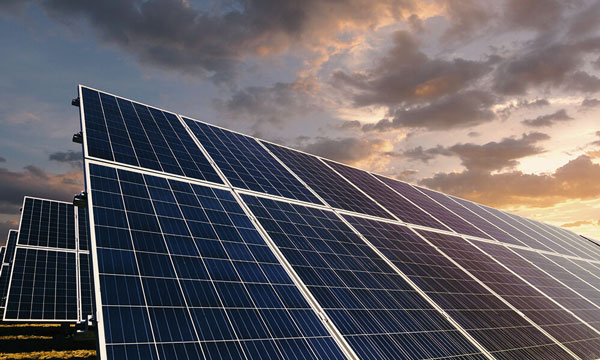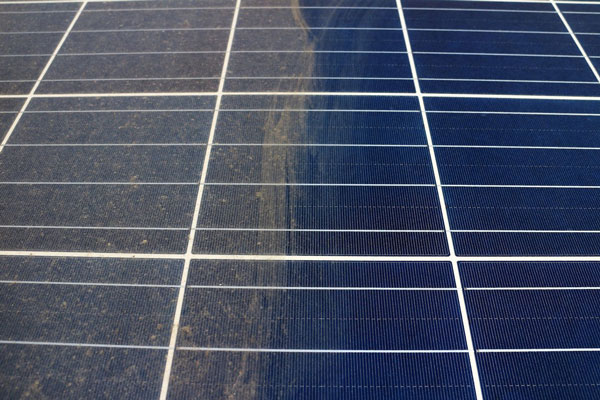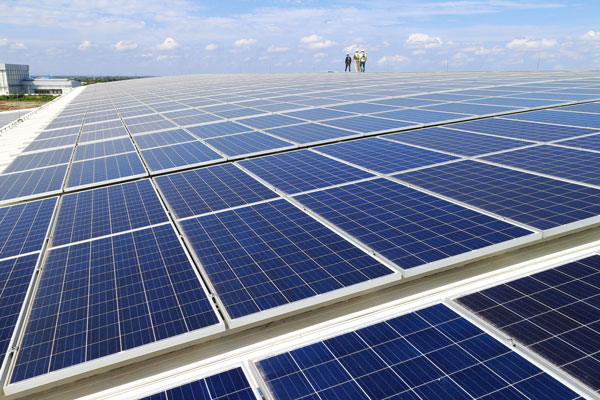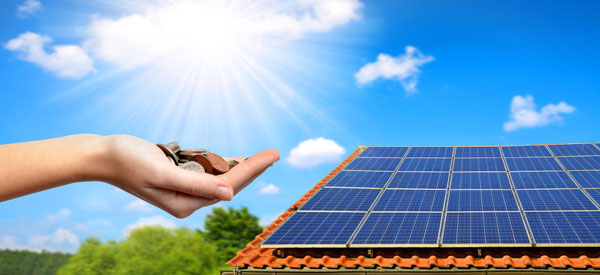Too Expensive
Upfront Costs Versus Long-Term Savings
While the up-front costs of installing solar panels might be high — typically from $15,0003 to about double that4 — it more than pays for itself over time. The federal Solar Investment Tax Credit (ITC) allows for a 26% reduction on the cost of installation to be deducted from Federal taxes, which is significant. Furthermore, state incentives and rebates can help lower the cost to zero for less. For homeowners, this means a lower electricity bill - saving the average homeowner about $1,000 to $2,000. As such they can pay for themselves in less than 10 years (breakeven) and go on to produce free electricity a further 15-20 years or more since modern panels have expected lifespans of well over twenty five to thirty years.
Leasing and Financing Solutions
There are multiple financing options to reduce the cost of initial investment like solar loans, leases. These are financial arrangements that often need no upfront money and typically have flexible payment terms, sometimes less than what you expect to pay on a monthly basis in your electric bills. Solar leases, for instance, mean homeowners can access energy from the panels without actually owning them and therefore avoid maintenance and repair costs as well as enjoy cheaper energy rates. Solar loans, however help homeowners take advantage of the tax credits and rebates while they build equity in the system.

Impact on Property Value
Studies show that solar increases resale value Homes with solar panels sell for 4.1% more than equivalent homes without solar, according to a study from Lawrence Berkeley National Laboratory (). The net result is surprisingly reasonable, a premium that typically reaches over $9k in extra value for an average home and can offset installation costs largely up front.
Versus Traditional Energy Costs
The advantage of solar over conventional energy sources may become more pronounced as time goes by. Prices for traditional energy sources have tended to be volatile and can reflect a number of external market, as well as geopolitical factors that influence the overall cost of electricity. Solar energy gives homeowners a consistent price for their power, avoiding the ebbs and flows of fossil fuel prices. Legacy wise, the price of electricity typically increases by 2-3% yearly but with solar panels on their home a homeowner is insulated from these rate rises as energy rates are ~~fixed~~ at time-of installation.
Reduced Costs by Technological advancements
Solar has seen costs come down over the last decade by more than 70%, largely due to tech improvements and increased production scales. Further reductions, and performance improvements are promised from continuous advances in PV cell efficiency and manufacturing processes. With increasing advances in technology, solar panels are becoming more efficient and can turn sunlight into electricity using smaller amounts of sunlight with lower overall cost per watt.
Previous and Future Market Trends
The price of solar installations is falling as the market grows increasingly competitive, due in no small part to global movement toward renewable energy. As demand increases and new technologies are used, analysts predict that the cost of such installs will only continue to decrease in price over time which should make going solar an even more attractive enterprise for forward looking homeowners.
Requires A Lot of Maintenance
Self-Reliance And Solar Panels
However, solar panels are durable and only need low maintenance. Panels are generally built to withstand the harshest weather elements such as torrential rainfall, snow load and high winds. Solar panels are built from tempered glass and framed in aluminum, which makes them very resilient against environmental damage. This absence of moving parts means there are fewer items to potentially break or simply cease functioning.
Routine Cleaning Requirements
Added to this they requires regular cleanings, as keeping the solar panels dirt free is one of the basics for maintenance, it will be cleansed and there should not have dust/dirt on its surface which cover make obstacles between sunlight energy. It cleans most parts of the work with rainfall. Homeowners living in low-rainfall parts of the country may have to manually wash panels as little as once or twice a year, usually by spraying them off with a garden hose. For very dusty regions or where bird excrement contaminates the panels, cleaning every 3-5 years may be needed but without a need for professional services.
Monitoring System Performance
IoT products enable homeowners to digitally monitor the performance of their solar panel systems. This includes notifying the owner of any efficiency problems, which are infrequent and many times can be corrected with basic troubleshooting such as looking for blockages or shade from new landscaping.
Long Lifespan and High Warranty Protection
Most solar panels come with a performance warranty of 25 to 30 years, during which manufacturers promise that the panel will produce at least some minimum percentage (usually above 80-85%) on its original efficiency level. Many of them also include an equipment warranty that covers the inverter and other components, meaning they will provide a replacement if technical problems arise. It helps to prevent any out of pocket costs for future maintenance and repairs under this warranty assistance.
Professional Inspections
You need to do very little hands-on monthly or annual maintenance, but I recommend a professional inspection every few years. These inspections can be beneficial to make sure that each element of the solar system such as panels, mounting equipment and wiring are in good place. Components can be readjusted by professionals to ensure the system is running perfectly.
The Effects of Low Maintenance on Total Costs
Solar panels require a minimum amount of maintenance, and that gives solar energy an edge over other fossil fuels in terms of cost-effectiveness. As a rule, more maintenance is required on other types of generator systems with solar panels operating at or close to peak performance without operator intervention during the majority of usage.
Will Damage Your Roof
Safe to be installed if done Properly
Certified professionals Mount solar panels to protect the health and durability of your roof. Installers generally PTthe racking system. which is built to disperse the weight of the solar panels throughout a wide swath roof, so as not place too much force on one part before Ju Pyongyang it with lag bolts or screws. They are divided into systems and use seals, alongside flashing types of equipment to make the roof waterproof in such a way that framework is not creating leaks or destroying the whole structure.
Increased Roof Longevity
With all else being equal, solar panels rarely harm the roof while they can protect these areas from rain, snow and debris. Help Your Roof Last Longer Solar panels are able to cover and therefore shield your Maui roof from the sun, essentially blocking UV rays that can degrade roofing materials. Parts of a roof under solar panels often last longer than exposed areas homeowners say.
Perform Load Analysis Before Installation
Qualified solar installers assess the structure of your roof prior to installation so that they will know if it's supporting all those additional weight(panels). This includes evaluating the experience of the roof, its age and structural integrity. Any potential problems that could prevent the roof from supporting panels are resolved before an installation is made.
Warranty and Protection Plans
Even better, most reputable solar installers include warranty that accounts for any damage to the roof due whilst putting up their system. These warranties usually include exteriors or construction problems that result in the leaking of water from a dwelling they built are going to be resolved at totally free with your homeowner. And it just provides that much more security and comfort to property owners.
Examples from Business and Industry
This widespread installation across the building infrastructure of multiple countries supports a general belief in the safety and roof-friendly character of solar installations, properties that are well-documented through more focused studies. According to industry etiquette, it is required that the three components go through extensive testing and quality assurance to ensure their installation methods are safe & efficient. Countless case studies on buildings with decades worth of solar panels proves that they do not damage the roof and its post: «Many other examples show us, countless museums to private homes where systems are in place 20–30 years or more (including ourselves among others) confirm this.
Progressing Misunderstandings Through Learning
Teaching people the right ways to install solar panels and about possible benefits might put these damaging roof myths at bay. By knowing all the details that you need to follow in other to have your solar energy safe and ready, property owners will be more reassured of their installation.
Not Efficient Enough
Solar panels have gotten more efficient
Advances in solar panel efficiency are unthinkable of a mere few decades ago. Nowaday, the efficiency of modern photovoltaic (PV) cells is over 22% - a huge improvement on older models that typically achieved an energy conversion of about 15%; even so it must be noted. Increase in conversion rates are facilitated by improvements in materials, like monocrystalline silicon which has a more efficient energy yield.
Efficiency Compared With Fossil Fuels
Solar panels produce less energy per square metre than fossil fuels, but they are very effective over time due to their ability of converting sunlight directly into climate-neutral electrical power without any emissions and moving parts. If we step back and take into account the lifetime output of energy versus the environmental costs, maintenance for traditional sources-solar panels are very probably a more than equal competitor.
The efficacy of solar panels depend also largely on the location and direction they are installed. For example, panels placed in regions that have higher levels of solar irradiance - including deserts and those situated closer to the equator - will be more efficient. Prime tilting and aiming at the sun will also increase energy intake, maximizing your yield even in a more dan setting.
Technological Innovations
On a daily basis, R&D in the solar industry is elaborating unique ways to innovate and feed unrevealed characteristics of PV's. Technological advances - such as bifacial panels that catch the sun on two sides and improvements in anti-reflective coatings - will help make those efficiency levels even higher. These technologies would also be used to increase the total solar energy capture and consequently, battering the backyard beliefs about inefficiency of solar.

Installation with Energy Storage Systems
If combined with the smart energy storage offers that are now available, solar panels become even more efficient. One of the biggest benefits is that these solutions store all extra energy created during high sun hours to provide power at any moment, for example in evening or when it's cloudy. Instead, energy storage technologies enable more continuous solar power sources which increase the efficiency of converting sunlight into kinetic or electric power by orders-of-magnitude.
Causes Cancer
Need for Ionizing Radiation in Solar Devices
How Do Solar Panels Work On The Other Hand, the mechanism by which solar panels produce electricity is based on direct sunlight Conversion through Photovoltaic cell (PV) that has nothing to do with an Ionizing Radiation type of rays as it used in X-rays Emitting mammographic exams & build up radiotherapeutic doses which usually are a source for cellular and DNA damage then cancer formations. Sunlight, from which solar panels generate energy, is a form of non-ionizing radiation and compared to ionizing sources or processes not associated with cancer.
Certifications in Health and Safety
Before a solar panel is sold put on the market and install, it will be expected by their customers to need attends in deference with health and safety. Firstly, they must meet rigorous testing and certification requirements making sure that under normal operating conditions the lamps do not emit any unhealthy radiations or chemicals. These certifications are for international standards like the International Electrotechnical Commission (IEC) as well as Underwriters Laboratories (UL), which assures that your product is produced with no harmful emissions.
Solar Panels and Health Study
There has been a lot of research examining whether or not solar panel systems pose any health risks to those who live and work around them. Solar panels do not emit any carcinogenic substances or radiation that can cause long term health issues according to the World Health Organization (WHO) and reputable institutions such as The National Renewable Energy Laboratory.
Solar Panel Raw Materials
The materials that are used in solar panel production - silicon, copper and aluminium - do not produce any harmful emissions once activated into electricity. Solar Panels Are Produced in a Controlled Manner without Hazardous Chemicals The materials are contained within the structure of the panel so do not leach out with normal use.
Comparative Risk Analysis
In contrast to fossil fuels that release known carcinogens such as benzene and formaldehyde when burned, solar panels offer a relatively benign energy source. Solar panels do not produce any smoke, smog or other pollutants that cause air pollution; but the manufacture and installation of solar systems have associated emissions.



